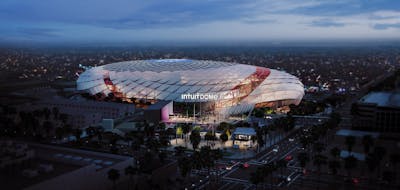
Target Field
From unbuildable to beacon of sustainability
Project Facts
| Location | Minneapolis, Minnesota |
| Owner | Minneapolis Ballpark Authority |
| Size | 1,045,795 SF |
| Cost | $435 million |
| Status | Completed 2009 |
| Capacity | 40,000 seats |
| Certifications | LEED Gold |
Overview
Hailed as the most environmentally responsible major league ballpark with its esteemed LEED Gold Certification, Target Field seamlessly blends with downtown Minneapolis’ existing infrastructure, prioritizing commuter rail and pedestrian accessibility over traditional vehicular modes. A remarkable one in five fans opts for alternative transportation, significantly curbing greenhouse gas emissions. Despite its unassuming surface, this development rests atop a rail line, two commuter lines, an active interstate highway, and a critical stormwater outfall—an impressive showcase of Walter P Moore’s engineering excellence in transforming what was once considered an “unbuildable” site.
Services
About the Project
Spanning a 5-acre area smaller than Wrigley Field, Target Field has ingeniously converted a surface parking lot surrounded by preexisting infrastructure into a veritable jewel for Minneapolis. Serving as the home of the Minnesota Twins, it bridges the gap between downtown Minneapolis and the North Loop, driving economic growth in the vicinity. Recognized as the top fan experience in professional sports by ESPN Magazine, this open-air ballpark welcomed a record-breaking 3.22 million fans during its inaugural season in 2010.
A true Major League Baseball pioneer, Target Field features a fully enclosed canopy that cantilevers 90 feet at each end, offering shelter from the elements and contributing to the ballpark’s distinctive appearance. Seamlessly incorporated into the design is a transit station to accommodate over 25 percent of fans who opt for alternate transportation methods. This challenging urban site is further complicated by three active rail lines, problematic soils, culverts, and encumbrances imposed by major highways and parking structures. The project saw the transfer of more than 100 building columns due to site constraints and programming needs, yet Target Field was completed three months ahead of schedule and under budget.
Innovating stadium architecture, Target Field departs from the traditional brick aesthetic, embracing local limestone, heated viewing areas, and a heated field, all crowned by a protective canopy over the top deck. Seamlessly linked to the intermodal Target Field station, the stadium effortlessly connects the Metro Blue and Green Line light rail service with the Northstar commuter rail line. Walter P Moore played an integral role as the structural engineer for the stadium and its signature canopy.
Initially recognized with LEED Silver Certification, Target Field became the second LEED-certified professional sports stadium in the United States. Its continued commitment to sustainability culminated in 2017 when it attained LEED Gold status, solidifying its position as the nation’s first sports facility to achieve this esteemed designation.







